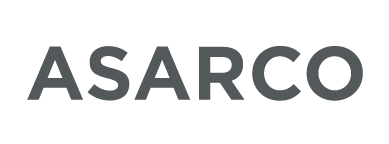ASARCO
ASARCO owned an asbestos mine in Canada and an asbestos pipe manufacturing business that exposed workers to the toxic mineral. Asbestos litigation led to a bankruptcy filing that established the ASARCO asbestos trust fund in 2009.

ASARCO’s History With Asbestos
Founded in 1899, the American Smelting and Refining Company consolidated several mining, refining and smelting operations in the U.S and Mexico. The company entered the asbestos mining industry in the 1950s and started an asbestos pipe manufacturing business in the 1960s.
- More than 100,000 personal injury lawsuits were pending against ASARCO when it filed for bankruptcy protection in 2005 and created an asbestos trust fund.
- From 1963 to 1994, ASARCO was involved in the Cement Asbestos Products Company, also known as CAPCO. It was first part owner, then acquired full ownership in 1974.
- The company’s asbestos mine in Canada was the second largest producer of asbestos in North America.
From the early 1950s through 1989, ASARCO owned an asbestos mine in Black Lake, Quebec. The discovery of asbestos beneath Black Lake led to a dredging project that created one of the largest open-pit asbestos mining operations in the world. ASARCO’s mine supplied its pipe subsidiary with asbestos. CAPCO and other manufacturers used the material in piping for its resistance to corrosion.
Today, ASARCO is an Arizona-based miner, smelter and refiner of copper. Grupo Mexico owns the company.
Development of the ASARCO Asbestos Trust
ASARCO filed for Chapter 11 bankruptcy protection in August 2005. The reorganization plan allocated more than $900 million to fund a trust to compensate current and future asbestos claimants. It also required ASARCO to pay $1.79 billion to fund environmental cleanup at more than 80 sites contaminated by mining operations in 19 states.
In December 2009, the ASARCO Asbestos Personal Injury Settlement Trust began accepting claims. By 2016, its assets exceeded $1 billion. The trust’s most recently available financial report shows more than $735 million in net assets as of 2022. Since its inception, the trust has paid more than 473,000 personal injury claims.
The scheduled value for mesothelioma claims with the trust was established at $170,000. In 2014, the trustees agreed that it may award mesothelioma claims up to six times the initial scheduled value. The current payment percentage is 35%, which is relatively high compared to other asbestos trust funds.

If you developed mesothelioma after asbestos exposure, you may be eligible to file a trust fund claim.
Access Trust FundsAsbestos Litigations and Lawsuits Against ASARCO
Thousands of lawsuits have accused ASARCO and its subsidiaries, including CAPCO and Lake Asbestos of Quebec, of liability for asbestos exposure that led to mesothelioma, asbestosis and other asbestos-related diseases.
- Employees v. CAPCO: A 2011 lawsuit filed by several plaintiffs who worked at CAPCO claimed occupational asbestos exposure caused them to develop asbestosis and mesothelioma.
- Foret v. Lake Asbestos of Quebec: The daughters of Robert Foret filed suit against Lake Asbestos of Quebec claiming their supply of asbestos to a National Gypsum plant in New Orleans caused their father to develop lung cancer and other asbestos-related diseases.
- Plaintiffs v. ASARCO: In a 1991 lawsuit, numerous plaintiffs alleged that they developed asbestosis, mesothelioma and other conditions as a result of exposure to asbestos fibers supplied by Lake Asbestos of Quebec.
- Craig v. Lake Asbestos of Quebec: In a 1988 lawsuit, Clarence Craig claimed he was exposed to asbestos fibers supplied by Lake Asbestos of Quebec while employed at an Owens Corning plant in Berlin, New Jersey.
Many of the lawsuits claimed the plaintiffs experienced exposure to asbestos supplied by ASARCO’s Lake Asbestos of Quebec. In addition to these mining operations in Canada, exposure to ASARCO’s asbestos fibers often occurred at asbestos product manufacturing plants in the U.S.
ASARCO’s Asbestos Products & Workers at Risk
ASARCO’s asbestos mine in Canada produced asbestos fibers that it sold to other ASARCO subsidiaries, including CAPCO. The mine also sold the toxic fiber to hundreds of asbestos product manufacturing plants throughout the U.S.
The biggest asbestos companies, including Armstrong, Celotex, GAF, Garlock, Johns Manville, Raybestos Manhattan, Owens Corning, U.S. Gypsum and Union Carbide, owned many of these plants.
ASARCO’s subsidiaries also exposed workers to asbestos fibers. Lake Asbestos of Quebec exposed miners and millers to raw asbestos ore and processed fibers. Employees who manufactured pipes at CAPCO worked directly with asbestos fibers.
- Raw asbestos fibers
- CAPCO Permaflex asbestos cement pipe
CAPCO operated asbestos pipe manufacturing plants in Ragland, Alabama, and Van Buren, Arkansas. The company used about 6,000 tons of asbestos annually to make pipes. Exposure also occurred when construction workers and pipefitters installed these asbestos pipes, which included sewer pipes.
People who developed asbestos-related illnesses from these asbestos products may file claims with the ASARCO Asbestos Personal Injury Settlement Trust.
Recommended Reading


